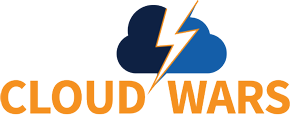
Welcome to the “Biz Apps Partner Podcast,” a weekly video series designed to decentralize intelligence about how partners can scale their Microsoft practice by having short, to-the-point discussions with Microsoft leaders in product, engineering, marketing, partner management, programs, and more.
In this Biz Apps Partner Podcast Special Report, sponsored by SignUp Software, John Siefert hosts David Schmidt, CEO, Strabo Partners, and Ryan Meade, Chief Alliance Officer, DynamicWeb, for a conversation focusing on how over-customizing will increase your costs, especially during a big, transformative project.
Key Takeaways
- Critical issues when considering customization vs. configuration: Customization conversations tend to come up early in the transformation process. In the analysis phase, these conversations involve educating customers about what to consider. Customization comes up often because it’s something organizations have always done. However, this can lead to extensive work, costs, scope, and overall complexities.
- Guidance and advice: “Start by reviewing standard functionality…Start with that as a building block. There’s no reason to start with, ‘Here’s all the things we want,'” Meade says. Understanding the standard process first can help organizations, as each functionality in the process exists for a reason. Since systems can now “do all the things you want to,” there are more doors open that can resolve complexities and challenges.
- Managing regulations and industry requirements: When doing a project, Schmidt prompts, “Why are we doing this customization?” This can help them pinpoint whether it’s simply good for the business or if there are requirements that need to be met, especially for industry regulations. Customizations for compliance and regulation requirements are necessary
- The right platform and process: Various customization needs exemplify the importance of having the right platform for your organization. “A customization can add to that cost but you want to pick a platform that makes that as low cost as possible,” Schmidt says. Meade adds that it’s also important to consider the best process for your business.
- A phase approach: Starting with something that’s a “phase one” can help reduce the timeline, opportunities for risk, and complexities. “Customize where you need to customize, but then build something that you can build on overtime,” Meade notes. “Sometimes that phase approach can really give you a good perspective on what you really should be focusing on with the new system.”
- Setting goals: At the start of a project, it’s important to set goals for your business. This guides customizations as you identify what your business aims to accomplish. “What are your guiding principles to say, ‘This is what we’re trying to get out of this project’?” This often leads to how you handle when a customization comes up from the user base, and not spending time working against your goals.
- Understanding the business: You must understand the business you’re implementing for. This enables you to guide your customer on how to approach customizations.








